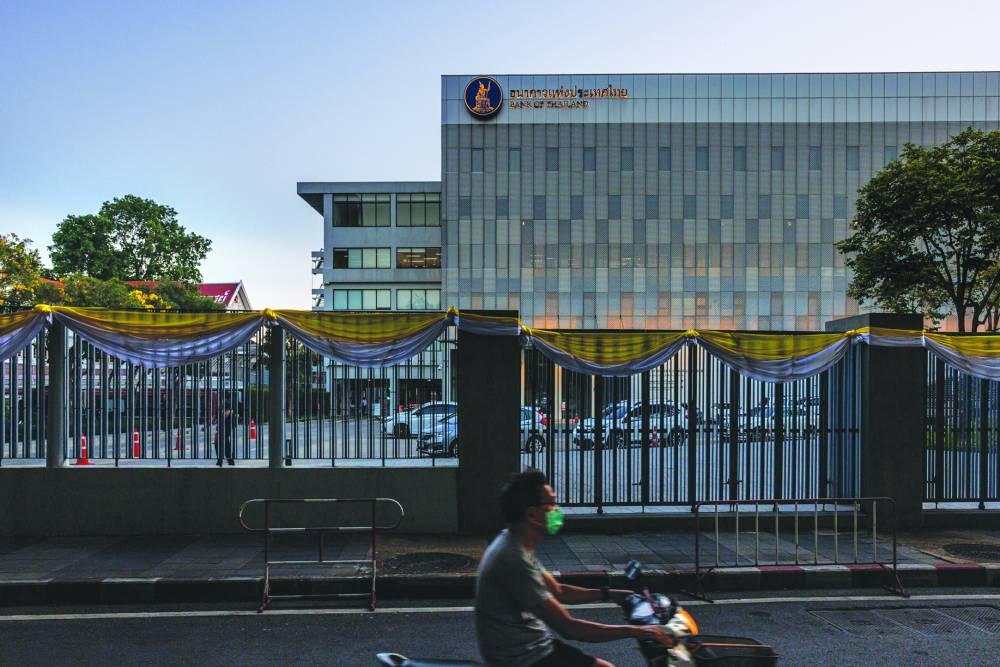Thailand’s central bank will weigh the need to adjust its neutral interest-rate stance at next month’s meeting, according to Assistant Governor Piti Disyatat, amid rising bets that policymakers are edging closer to a rate cut.
“It’s hard to prejudge the decision right now, but whatever is being considered is more like a recalibration rather than an easing cycle to support the economy because the economy is actually recovering,” Piti said in an interview with Bloomberg Television’s Haslinda Amin yesterday.
The central banker made the remarks three weeks from the April 10 rate meeting against the backdrop of rising expectations that Bank of Thailand will deliver its first interest-rate cut in four years, as early as next month.
Prime Minister Srettha Thavisin had been pressuring the BoT to cut borrowing costs that are at a decade-high to support an economy that he had said was in a crisis.
Economists including those from Standard Chartered Plc and Siam Commercial Bank Pcl are pencilling in a rate cut in April while 10-year bond yields are also pricing in Thailand’s pivot to monetary easing after a one-year tightening campaign to rein in inflation. The central bank has so far resisted repeated calls to loosen policy settings.
Piti thinks the market is still “split” on the rate path, highlighting BoT’s economic assessment that “the softness has passed and in the near term, there is actually a cyclical pickup in growth.” The key growth risk that the central bank was watching out for was the impact of delayed budget spending, he said. “So the first question is to decide whether there is actually a need to recalibrate neutral,” stance, Piti said. “And if there is one, then the timing is the second issue; whether what would be the appropriate timing of the recalibration.”
The latest remarks by Piti elicited varying interpretations from economists, with Australia & New Zealand Banking Group Ltd’s Krystal Tan describing it as “quite balanced” while Kasikorn Research Center’s Burin Adulwattana read the signal as still hawkish. StanChart’s Tim Leelahaphan saw it as an indication of an approaching shift to easing.
“The central bank signalled that there is a scope to cut the policy rate if the economic performance comes in softer than expected,” Burin said, referring to Piti’s remarks on Friday. “We can’t feel the sense of urgency from the comments. So, we expect the first cut to take place in June rather than in April.”
Consumer prices printing negative since October was cited by Srettha as evidence of waning demand in the economy. While the BoT had explained the spell of disinflation as an effect of government subsidies, other indicators also pointed to sluggish demand. Factory output has shrunk for more than a year, while business sentiment has deteriorated for five straight months since October.
Thailand’s automobile sales slumped to a 29-month low in January, as banks rejected about 50% of total auto loan requests amid alarming household debt levels. That’s contributed to Thailand’s GDP expansion remaining the slowest among Southeast Asian peers.
“I would think it is reasonable to assume the readiness to cut rates, especially as the BoT has maintained that the current rate is at a neutral level,” said StanChart’s Tim.

A motorist rides past the Bank of Thailand complex in Bangkok. Thailand’s central bank will weigh the need to adjust its neutral interest-rate stance at next month’s meeting, according to Assistant Governor Piti Disyatat, amid rising bets that policymakers are edging closer to a rate cut.
